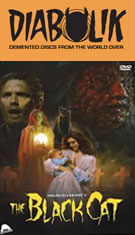
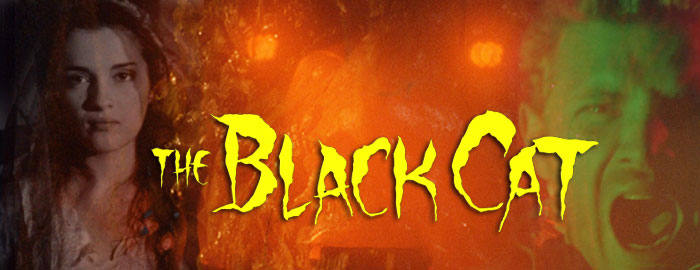
Color, 1990, 88 mins. 57 secs.
Directed by Luigi Cozzi
Starring Florence Guérin, Urbano Barberini, Caroline Munro, Brett Halsey, Luisa Maneri, Maurizio Fardo
Severin Films (Blu-ray & DVD) (US RA/R1 HD/NTSC) / WS (1.66:1) (16:9)
The 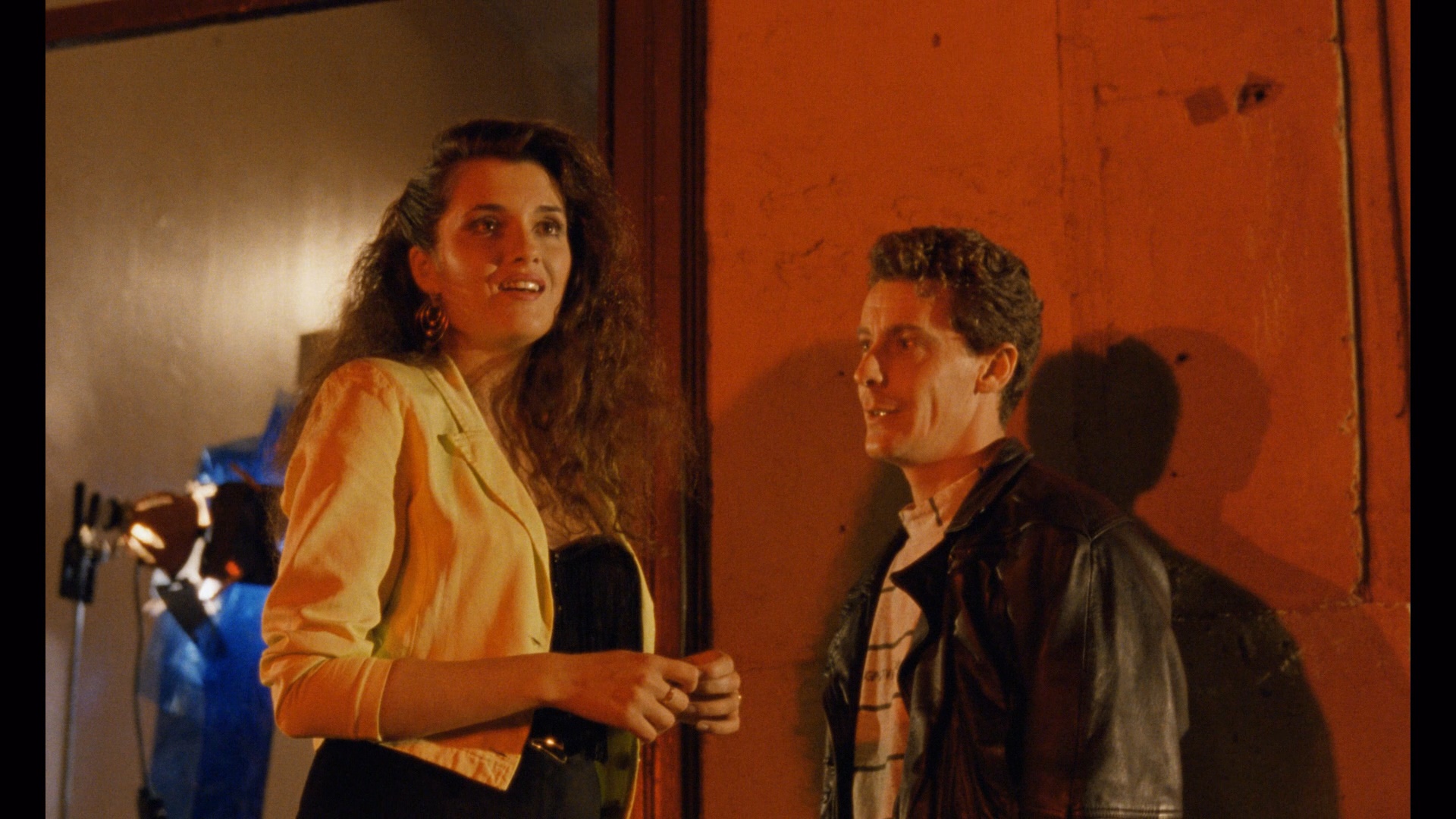 latter days of Italian horror were filled with bizarre attempts to keep the genre flame alive, but few can compete with the maniacal experience that is The Black Cat. With
latter days of Italian horror were filled with bizarre attempts to keep the genre flame alive, but few can compete with the maniacal experience that is The Black Cat. With 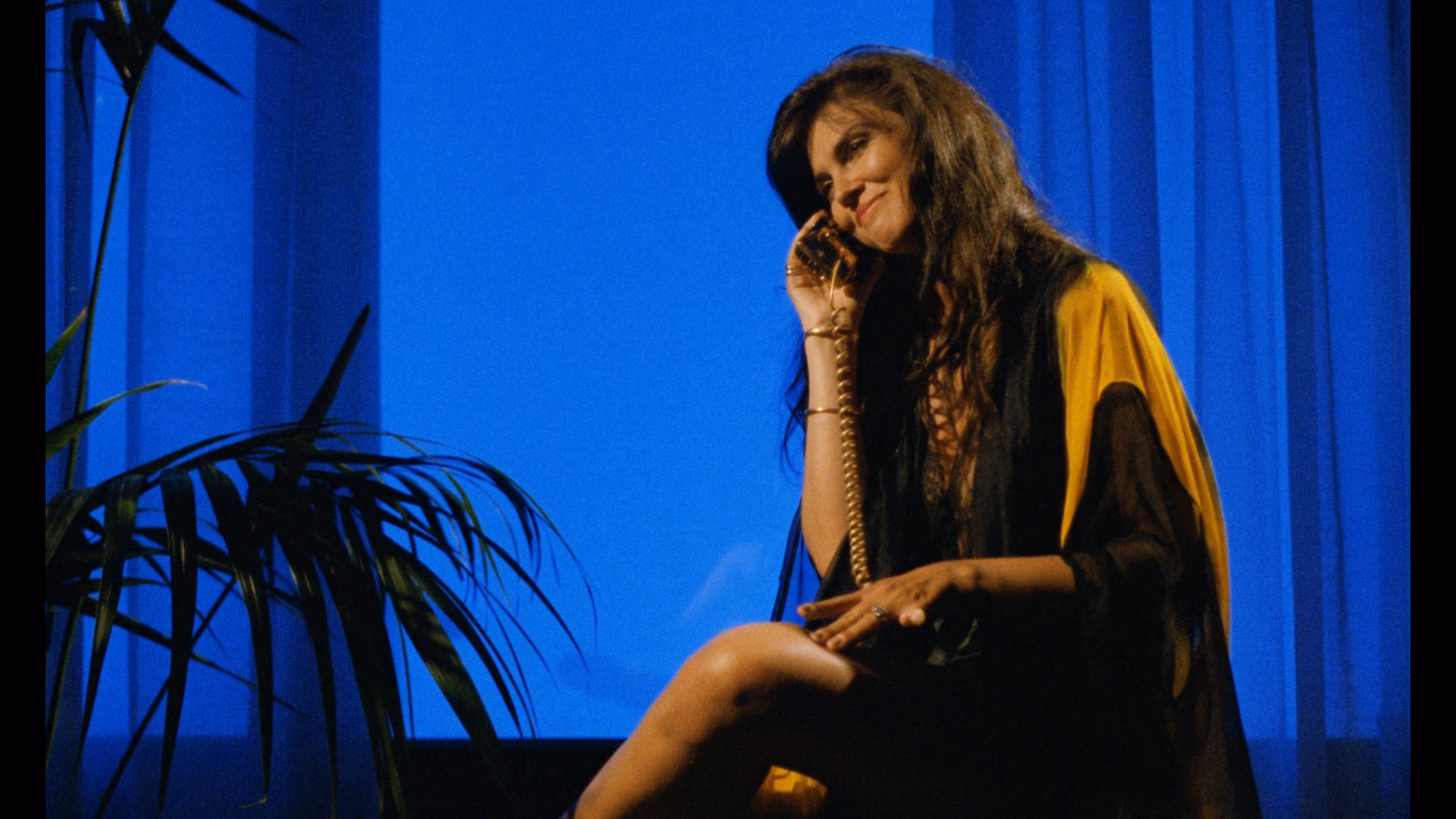 Dario Argento getting massive levels of horror press coverage in the late '80s but showing no interest in continuing his Thomas De Quincey-inspired cycle of Three Mothers witch films started with Suspiria and Inferno, his onetime romantic partner and Suspiria co-writer, Daria Nicolodi, began publicly musing about her own addition to the cycle called De Profundis inspired by De Quincey's "Levana and Our Ladies of Sorrow," which she had been writing since the start of the decade. While appearing in Paganini Horror for director and frequent Argento collaborator Luigi Cozzi, the idea to shoot Nicolodi's script came to fruition with plans for her to star; however, Cozzi's decision to set the story outside the world of Argento's films (and lace it with the trademark outer space and laser visuals a la Hercules) meant Nicolodi exiting as both writer and star. Meanwhile the production ended up in the hands of 21st Century Film Corporation during its waning days under Menahem Golan, who was churning out a line of Edgar Allan Poe adaptations (some in name only) including Masque of the Red Death, House of Usher, and Buried Alive. Though this film's plot had everything to do with Argento and nothing with Poe, Cozzi agreed to insert a few shots of a black cat and have a character drop a quote from the short story during a car drive; after all, the 1934 film of the same name had zilch to do with Poe as well. Thus by happenstance we ended up getting the third Italian horror film tied to Poe's "The Black Cat" (following the Sergio Martino and Lucio Fulci ones
Dario Argento getting massive levels of horror press coverage in the late '80s but showing no interest in continuing his Thomas De Quincey-inspired cycle of Three Mothers witch films started with Suspiria and Inferno, his onetime romantic partner and Suspiria co-writer, Daria Nicolodi, began publicly musing about her own addition to the cycle called De Profundis inspired by De Quincey's "Levana and Our Ladies of Sorrow," which she had been writing since the start of the decade. While appearing in Paganini Horror for director and frequent Argento collaborator Luigi Cozzi, the idea to shoot Nicolodi's script came to fruition with plans for her to star; however, Cozzi's decision to set the story outside the world of Argento's films (and lace it with the trademark outer space and laser visuals a la Hercules) meant Nicolodi exiting as both writer and star. Meanwhile the production ended up in the hands of 21st Century Film Corporation during its waning days under Menahem Golan, who was churning out a line of Edgar Allan Poe adaptations (some in name only) including Masque of the Red Death, House of Usher, and Buried Alive. Though this film's plot had everything to do with Argento and nothing with Poe, Cozzi agreed to insert a few shots of a black cat and have a character drop a quote from the short story during a car drive; after all, the 1934 film of the same name had zilch to do with Poe as well. Thus by happenstance we ended up getting the third Italian horror film tied to Poe's "The Black Cat" (following the Sergio Martino and Lucio Fulci ones 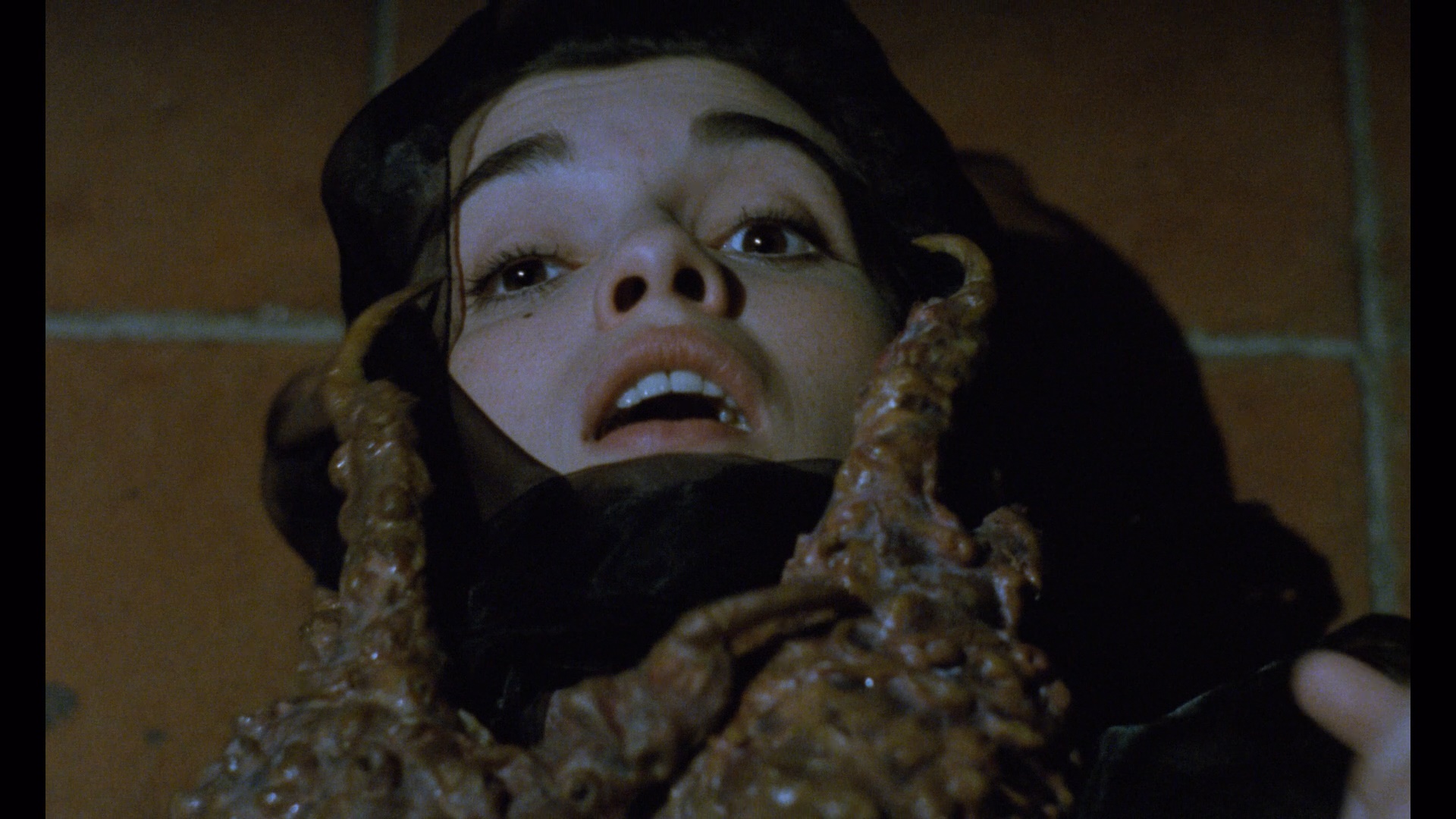 that actually drew narrative elements from the story), but the end product was jinxed by mysterious distribution
that actually drew narrative elements from the story), but the end product was jinxed by mysterious distribution 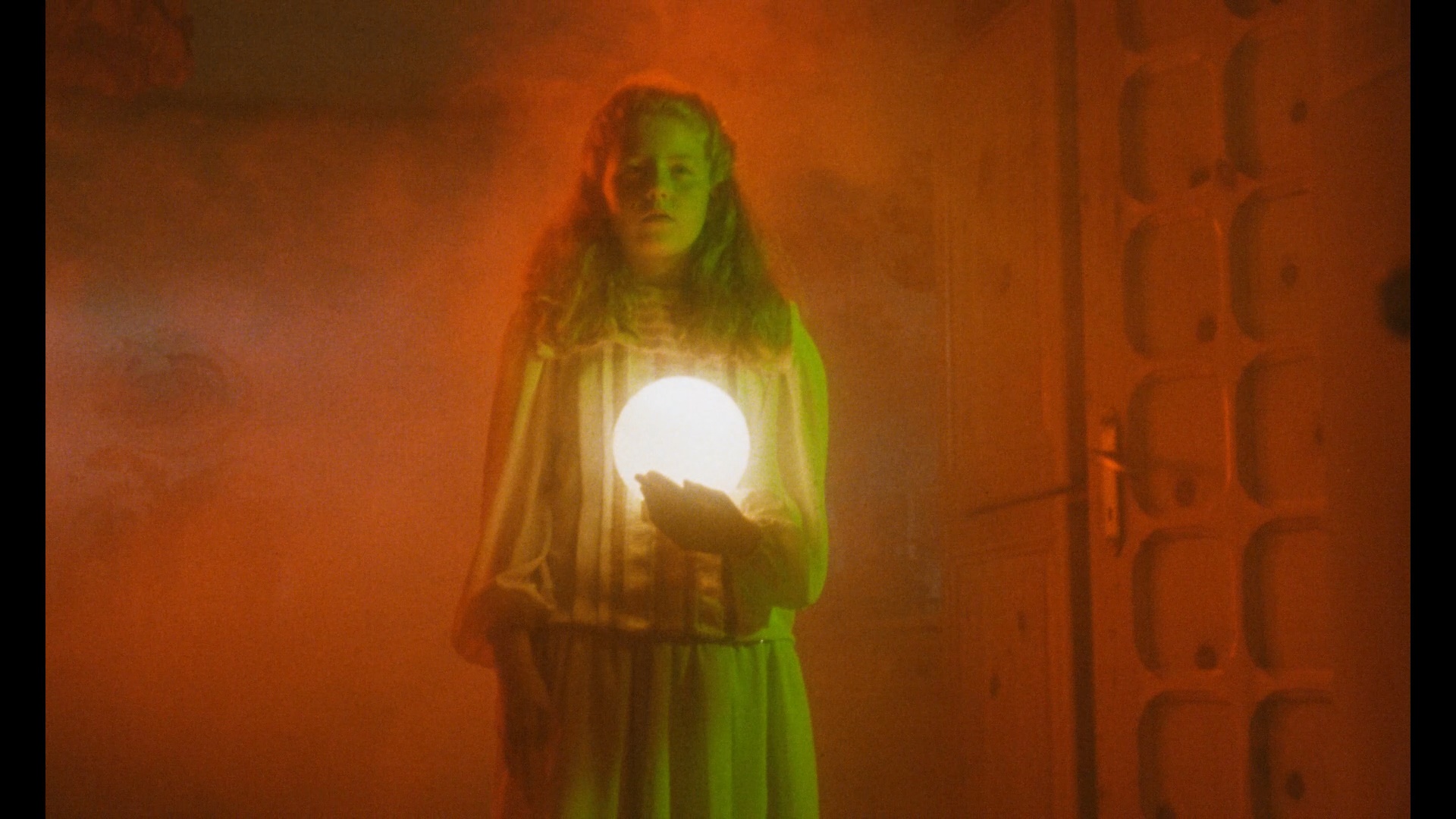 woes and barely ended up getting released while star Caroline Munro announced very vocally that she had never been paid for her work. In the U.S., the film somehow ended up skipping VHS entirely and debuted on The Sci-Fi Channel (now Syfy) in an edited version that omitted some of the gorier highlights; the only way to see it uncut was a rare Japanese VHS release which, in the grand tradition of turning Deep Red into Suspiria 2, called this Demons 6 to tie it to other unrelated films like The Devil's Veil and The Ogre. Strangely, Argento himself would deliver his own take on "The Black Cat" the same year with Two Evil Eyes, but that's another story. The finished film is an indescribable but entertaining potpourri of Italian genre elements freely drawn not only from Argento but other unexpected sources like The Visitor, Blood and Black Lace, Stagefright, Contamination, Beyond the Door, and Starcrash, which is just as weird as it sounds.
woes and barely ended up getting released while star Caroline Munro announced very vocally that she had never been paid for her work. In the U.S., the film somehow ended up skipping VHS entirely and debuted on The Sci-Fi Channel (now Syfy) in an edited version that omitted some of the gorier highlights; the only way to see it uncut was a rare Japanese VHS release which, in the grand tradition of turning Deep Red into Suspiria 2, called this Demons 6 to tie it to other unrelated films like The Devil's Veil and The Ogre. Strangely, Argento himself would deliver his own take on "The Black Cat" the same year with Two Evil Eyes, but that's another story. The finished film is an indescribable but entertaining potpourri of Italian genre elements freely drawn not only from Argento but other unexpected sources like The Visitor, Blood and Black Lace, Stagefright, Contamination, Beyond the Door, and Starcrash, which is just as weird as it sounds.
After a cosmic intro featuring a floating fetus, our story begins on a movie set with Anne (Guérin) and Nora (Munro) starring in a giallo called The Black Cat directed by Carl (played by Michele Soavi), who's actually credited as "Lewis Coats" on the slates (a nice in-joke for Cozzi followers). Annoyed with her director's reliance on nonstop gore, Anne vents her frustrations to her filmmaker husband, Marc (Demons' Barberini), the "king of the spaghetti thriller." Though she's just given birth, Anne is reluctantly willing to star in Marc's newest project, a new sequel to Suspiria (cue the iconic Goblin music) based around the character of the powerful witch, Levana, the Mother of Tears (who gets credited to Baudelaire here). Marc's co-writer, Dan (Fardo), happens to be married to Nora, who's keen on starring in the film herself since it might be produced by the 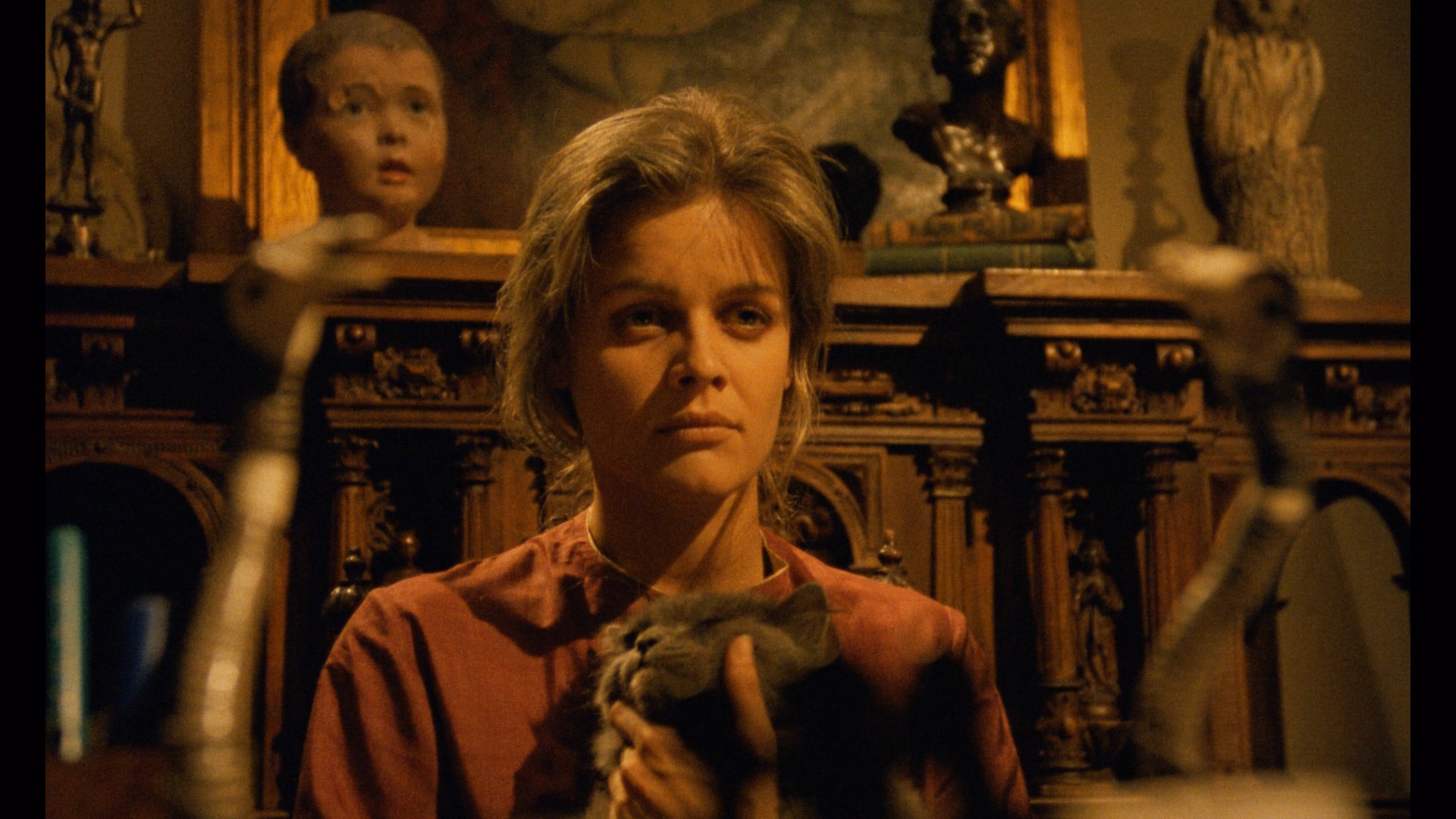 famous Leonard Levin (Touch of Death's Halsey). Upon trying on a
famous Leonard Levin (Touch of Death's Halsey). Upon trying on a 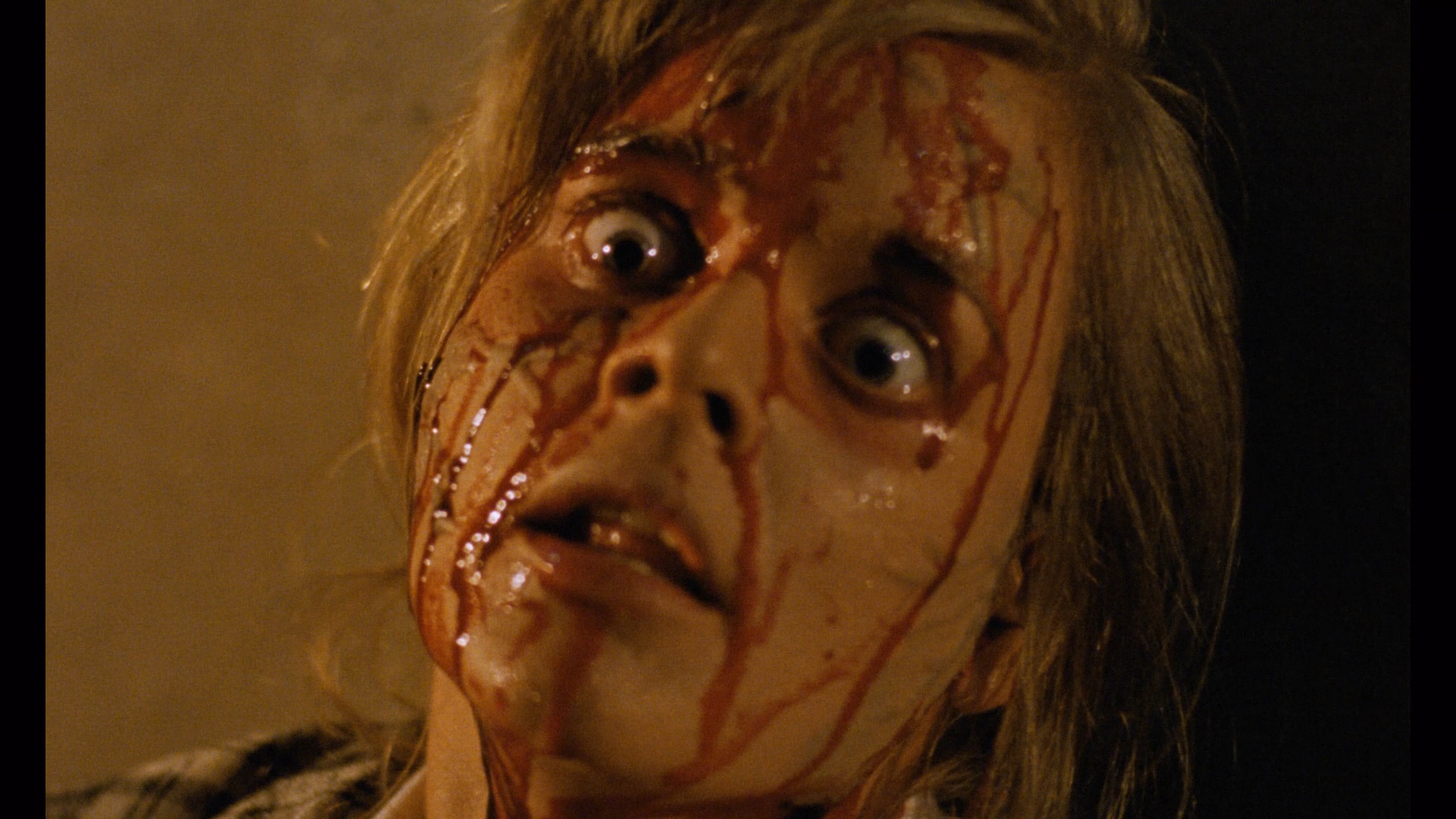 black veil after a celebratory dinner, Anne is attacked by Levana herself who leaps through a mirror and proclaims she will never be depicted on the screen... and then spews green goo all over Anne's face. Soon everyone connected to the film becomes the target of Levana who unleashes nightmares, bodily explosions, throat slashings, and lots of orange lighting before a final showdown that extends beyond this world.
black veil after a celebratory dinner, Anne is attacked by Levana herself who leaps through a mirror and proclaims she will never be depicted on the screen... and then spews green goo all over Anne's face. Soon everyone connected to the film becomes the target of Levana who unleashes nightmares, bodily explosions, throat slashings, and lots of orange lighting before a final showdown that extends beyond this world.
People expecting a linear successor to the two Argento films at the time were completely baffled by the film they got instead, which should be expected with Cozzi at the helm. He manages to drench the entire film with stylized lighting meant to evoke its famous predecessors, and though the film isn't all that gory as a whole, it does deliver in a handful of bloody sequences and even delivers some old school Gothic atmosphere at times complete with a cobweb-enshrouded grave and that old Italian standby, writhing maggots. The stylized lighting meant to evoke the previous Argento films doesn't always work, but it does produce beautiful results at times and ends up coming closer to the feel of its predecessors far more than the flat, workmanlike look of Argento's official conclusion to the trilogy, Mother of Tears. Adding to the fun is a very odd soundtrack combining an evocative score by Vince Tempera (fresh off of Paganini Horror and shamelessly aping Ennio Morricone's The Thing at one point) with hard rock tracks pulled from Bang Tango's Psycho Cafe and White Lion's Big Game LPs (with "Someone Like You" getting the most play), in keeping with the approach of recent fare like Demons, Phenomena, and Opera. Newcomers to Italian horror should probably steer clear as they'll have no 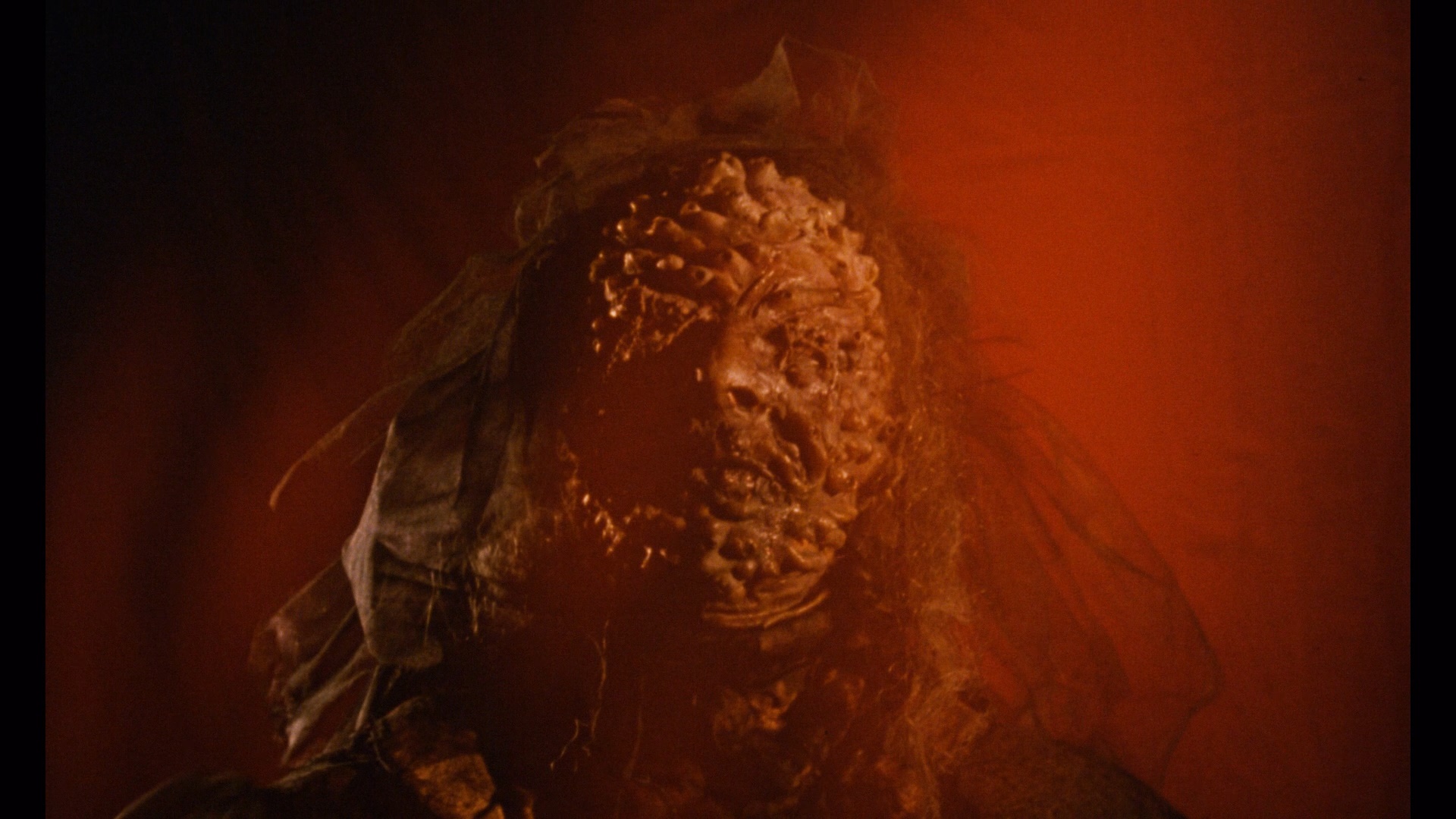 idea what on earth they're watching, but if you're familiar with the stranger alleys
idea what on earth they're watching, but if you're familiar with the stranger alleys 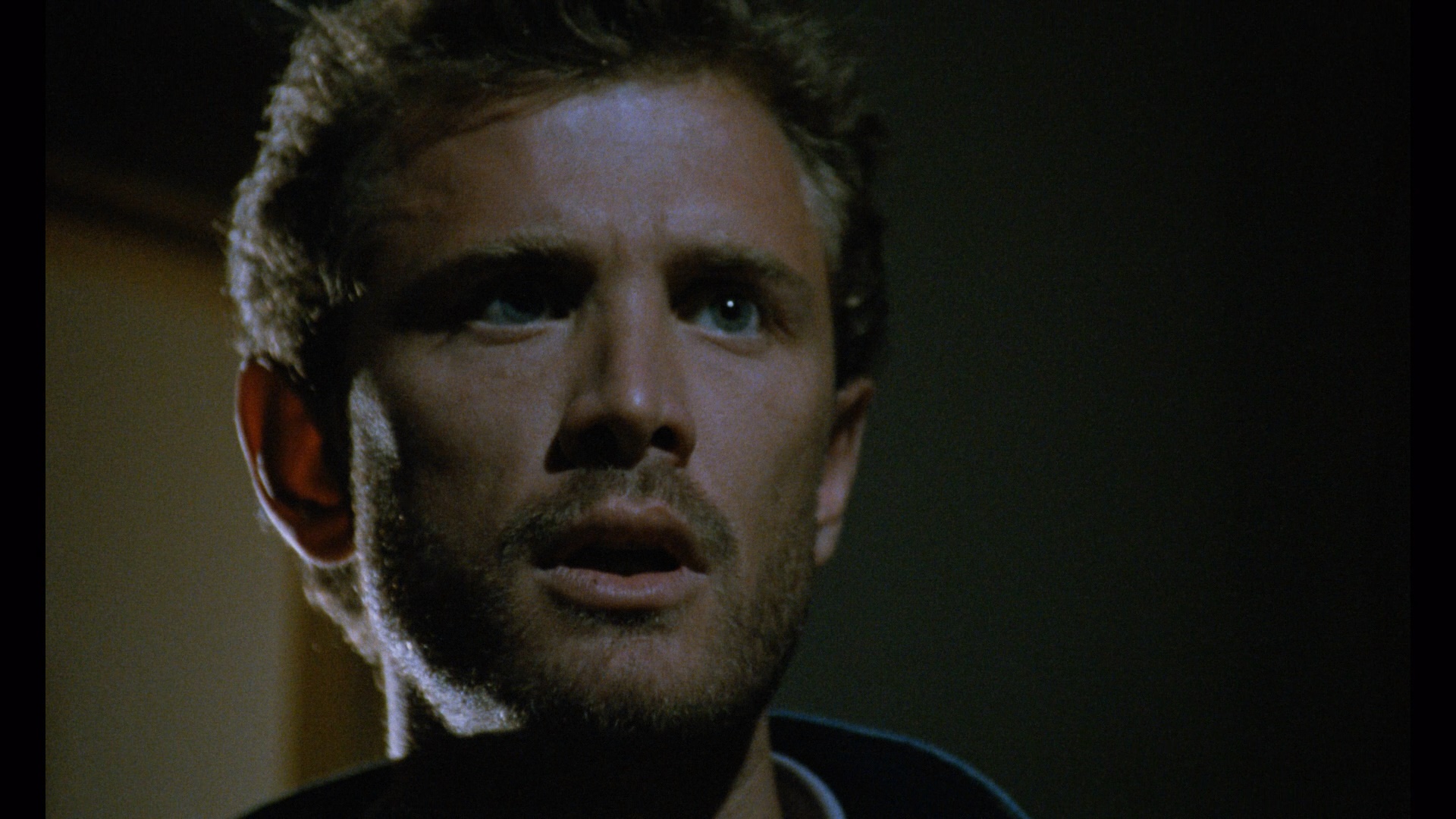 into which the genre could wander, you'll find of irrational nuttiness to enjoy here.
into which the genre could wander, you'll find of irrational nuttiness to enjoy here.
When the 21st Century library passed on to MGM, it seemed likely that this one would be a prime candidate to get its first official stateside release at some point-- especially when a dated but okay standard def master popped up on VOD streaming for a while. However, it took quite a few years until 2020 when Severin Films released it as separately Blu-ray and DVD editions featuring a 2K scan from "pristine vault elements." Whatever those elements may be, it's a big improvement over anything we've had before with those heavy orange and gold hues finally looking stable and atmospheric instead of smeary and dull. The 1.66:1 framing looks accurate as well and is more aesthetically pleasing than a tighter 1.85:1 option might have been. Though the majority of Italian films had gone to stereo by this point, this one joins The Sect as a late entry that was still mixed in mono for some reason and is presented that way here with a crisp English DTS-HD MA 2.0 track with optional English subtitles. (All of the actors spoke English for their scenes but were dubbed later, including Munro.) In "Cat on the Brain" (9m58s), Cozzi and Munro chat separately about hiding sci-fi elements in a horror film, the filming in Rome, the imminent collapse of the Italian theatrical market, and Munro's adoration of her director. The 21st Century trailer is also included (in great quality) and twists itself into knots trying to push Poe and every available shot of a black cat as much as possible.
Reviewed on October 25, 2020



 latter days of Italian horror were filled with bizarre attempts to keep the genre flame alive, but few can compete with the maniacal experience that is The Black Cat. With
latter days of Italian horror were filled with bizarre attempts to keep the genre flame alive, but few can compete with the maniacal experience that is The Black Cat. With  Dario Argento getting massive levels of horror press coverage in the late '80s but showing no interest in continuing his Thomas De Quincey-inspired cycle of Three Mothers witch films started with Suspiria and Inferno, his onetime romantic partner and Suspiria co-writer, Daria Nicolodi, began publicly musing about her own addition to the cycle called De Profundis inspired by De Quincey's "Levana and Our Ladies of Sorrow," which she had been writing since the start of the decade. While appearing in Paganini Horror for director and frequent Argento collaborator Luigi Cozzi, the idea to shoot Nicolodi's script came to fruition with plans for her to star; however, Cozzi's decision to set the story outside the world of Argento's films (and lace it with the trademark outer space and laser visuals a la Hercules) meant Nicolodi exiting as both writer and star. Meanwhile the production ended up in the hands of 21st Century Film Corporation during its waning days under Menahem Golan, who was churning out a line of Edgar Allan Poe adaptations (some in name only) including Masque of the Red Death, House of Usher, and Buried Alive. Though this film's plot had everything to do with Argento and nothing with Poe, Cozzi agreed to insert a few shots of a black cat and have a character drop a quote from the short story during a car drive; after all, the 1934 film of the same name had zilch to do with Poe as well. Thus by happenstance we ended up getting the third Italian horror film tied to Poe's "The Black Cat" (following the Sergio Martino and Lucio Fulci ones
Dario Argento getting massive levels of horror press coverage in the late '80s but showing no interest in continuing his Thomas De Quincey-inspired cycle of Three Mothers witch films started with Suspiria and Inferno, his onetime romantic partner and Suspiria co-writer, Daria Nicolodi, began publicly musing about her own addition to the cycle called De Profundis inspired by De Quincey's "Levana and Our Ladies of Sorrow," which she had been writing since the start of the decade. While appearing in Paganini Horror for director and frequent Argento collaborator Luigi Cozzi, the idea to shoot Nicolodi's script came to fruition with plans for her to star; however, Cozzi's decision to set the story outside the world of Argento's films (and lace it with the trademark outer space and laser visuals a la Hercules) meant Nicolodi exiting as both writer and star. Meanwhile the production ended up in the hands of 21st Century Film Corporation during its waning days under Menahem Golan, who was churning out a line of Edgar Allan Poe adaptations (some in name only) including Masque of the Red Death, House of Usher, and Buried Alive. Though this film's plot had everything to do with Argento and nothing with Poe, Cozzi agreed to insert a few shots of a black cat and have a character drop a quote from the short story during a car drive; after all, the 1934 film of the same name had zilch to do with Poe as well. Thus by happenstance we ended up getting the third Italian horror film tied to Poe's "The Black Cat" (following the Sergio Martino and Lucio Fulci ones  that actually drew narrative elements from the story), but the end product was jinxed by mysterious distribution
that actually drew narrative elements from the story), but the end product was jinxed by mysterious distribution  woes and barely ended up getting released while star Caroline Munro announced very vocally that she had never been paid for her work. In the U.S., the film somehow ended up skipping VHS entirely and debuted on The Sci-Fi Channel (now Syfy) in an edited version that omitted some of the gorier highlights; the only way to see it uncut was a rare Japanese VHS release which, in the grand tradition of turning Deep Red into Suspiria 2, called this Demons 6 to tie it to other unrelated films like The Devil's Veil and The Ogre. Strangely, Argento himself would deliver his own take on "The Black Cat" the same year with Two Evil Eyes, but that's another story. The finished film is an indescribable but entertaining potpourri of Italian genre elements freely drawn not only from Argento but other unexpected sources like The Visitor, Blood and Black Lace, Stagefright, Contamination, Beyond the Door, and Starcrash, which is just as weird as it sounds.
woes and barely ended up getting released while star Caroline Munro announced very vocally that she had never been paid for her work. In the U.S., the film somehow ended up skipping VHS entirely and debuted on The Sci-Fi Channel (now Syfy) in an edited version that omitted some of the gorier highlights; the only way to see it uncut was a rare Japanese VHS release which, in the grand tradition of turning Deep Red into Suspiria 2, called this Demons 6 to tie it to other unrelated films like The Devil's Veil and The Ogre. Strangely, Argento himself would deliver his own take on "The Black Cat" the same year with Two Evil Eyes, but that's another story. The finished film is an indescribable but entertaining potpourri of Italian genre elements freely drawn not only from Argento but other unexpected sources like The Visitor, Blood and Black Lace, Stagefright, Contamination, Beyond the Door, and Starcrash, which is just as weird as it sounds.  famous Leonard Levin (Touch of Death's Halsey). Upon trying on a
famous Leonard Levin (Touch of Death's Halsey). Upon trying on a  black veil after a celebratory dinner, Anne is attacked by Levana herself who leaps through a mirror and proclaims she will never be depicted on the screen... and then spews green goo all over Anne's face. Soon everyone connected to the film becomes the target of Levana who unleashes nightmares, bodily explosions, throat slashings, and lots of orange lighting before a final showdown that extends beyond this world.
black veil after a celebratory dinner, Anne is attacked by Levana herself who leaps through a mirror and proclaims she will never be depicted on the screen... and then spews green goo all over Anne's face. Soon everyone connected to the film becomes the target of Levana who unleashes nightmares, bodily explosions, throat slashings, and lots of orange lighting before a final showdown that extends beyond this world.  idea what on earth they're watching, but if you're familiar with the stranger alleys
idea what on earth they're watching, but if you're familiar with the stranger alleys  into which the genre could wander, you'll find of irrational nuttiness to enjoy here.
into which the genre could wander, you'll find of irrational nuttiness to enjoy here. ![]()